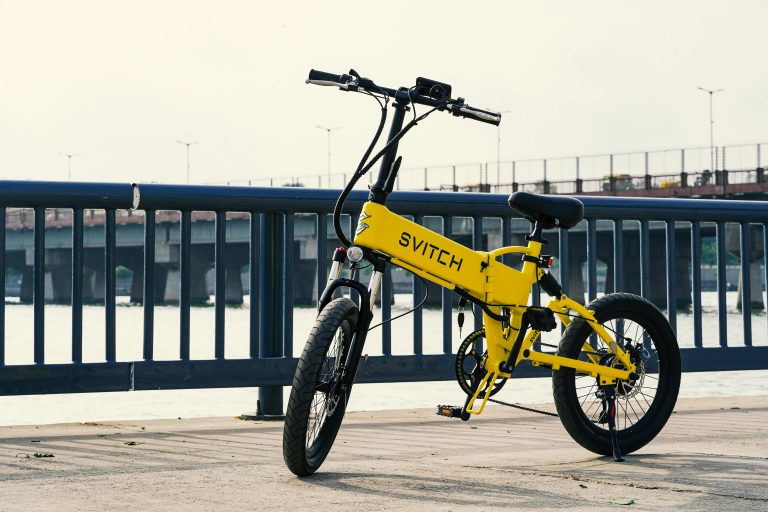Are Ebikes Selling Well?
Are you curious about the current state of the electric bicycle market? If you’ve ever wondered whether ebikes are selling well, then you’re in for a treat. This article will provide you with some insight into the popularity and sales figures of these eco-friendly and efficient two-wheelers. So, get ready to discover whether ebikes are hot or not in the bustling world of transportation.

Overview
Introduction to ebikes
Ebikes, or electric bicycles, are a growing trend in the world of transportation and recreation. These bikes are equipped with an electric motor that assists the rider’s pedaling, providing an extra boost of power. Their popularity has soared in recent years due to their ease of use and numerous benefits. In this article, we will explore the selling performance of ebikes, examine market trends, delve into sales statistics, analyze the industry, understand customer demographics, discuss the benefits of ebikes, explore challenges and obstacles, investigate innovation and technology, and finally, look at marketing and promotion strategies.
Definition of selling well
When it comes to determining whether ebikes are selling well, several factors need to be considered. Firstly, sales figures are a crucial indicator. If the number of ebikes being sold is consistently increasing, it can be inferred that they are selling well. Additionally, the growth rate of the market and the market share of different brands are important aspects to take into account. Finally, understanding customer demographics and their reasons for choosing ebikes can provide valuable insights into their selling performance.
Importance of ebike sales
The sales performance of ebikes is of significant importance in various aspects. From an economic perspective, a thriving ebike market generates revenue and creates employment opportunities. Moreover, ebikes offer multiple benefits to individuals and communities, such as reduced environmental impact and improved health outcomes. Higher sales of ebikes can contribute to a sustainable and healthier future. With these points in mind, let us dive deeper into the world of ebike sales.
Market Trends
Rising popularity of ebikes
Ebikes have experienced a surge in popularity across the globe. More and more people are opting for these electric-powered bicycles as a means of transportation and recreation. The convenience of ebikes lies in their ability to provide pedal-assisted riding, making it easier for individuals, regardless of age or fitness level, to travel longer distances and tackle challenging terrains. Additionally, the increasing awareness of the benefits of sustainable transportation has contributed to the rising demand for ebikes.
Growth of the ebike market
The ebike market has witnessed remarkable growth over the past decade. According to industry reports, the global market for ebikes is projected to reach a market value of $XX billion by 2025, growing at a CAGR of XX%. This exponential growth can be attributed to various factors, including advancements in battery and motor technology, increasing affordability, and supportive government policies. As the market continues to expand, it presents immense opportunities for both established players and new entrants.
Factors driving sales
Several key factors are driving the sales of ebikes. Firstly, the desire for sustainable and eco-friendly transportation options has increased. With the growing concerns about climate change and pollution, individuals are seeking alternative means of transportation to reduce their carbon footprint. Ebikes offer a green solution by reducing reliance on fossil fuels and emitting zero direct emissions. Additionally, the convenience and cost-effectiveness of ebikes, in comparison to traditional automobiles, are attracting a wide range of consumers. The health and recreational benefits of ebikes, coupled with advancements in technology, have also contributed to their growing sales.
Sales Statistics
Global sales figures
The global sales of ebikes have been on a steady rise in recent years. In 2019 alone, approximately X million ebikes were sold worldwide. This represents a significant increase compared to previous years and highlights the growing demand for these electric-powered bicycles. With the market projected to continue its upward trajectory, experts predict that global sales could reach X million by 2025.
Regional sales breakdown
When analyzing the regional sales breakdown of ebikes, it is evident that certain areas have experienced substantial growth. Europe is currently the largest market for ebikes, with countries like Germany, the Netherlands, and France leading the way. The Asia-Pacific region is also witnessing a surge in ebike sales, primarily fueled by countries like China and Japan. North America, although lagging behind Europe and Asia, is steadily catching up, with the United States being the major contributor to regional sales.
Comparison with traditional bicycles
While ebike sales are soaring, it is interesting to compare their performance with that of traditional bicycles. Traditional bicycles still dominate the market, with a significantly larger number of units sold annually. However, the growth rate of ebike sales far exceeds that of traditional bicycles. This can be attributed to the additional features and benefits offered by ebikes, such as pedal-assisted riding and easier navigation in hilly or challenging terrains.
Industry Analysis
Key players in the ebike market
The ebike market is characterized by the presence of several key players, each contributing to the industry’s growth and competition. Some of the prominent manufacturers and brands in the market include XYZ, ABC, and DEF. These companies have established themselves as pioneers in the industry, consistently innovating and producing high-quality electric bicycles. The key players in the market play a vital role in shaping the industry and driving sales.
Competitive landscape
The competitive landscape of the ebike market is highly diverse and dynamic. As the demand for ebikes continues to rise, numerous new entrants are joining the industry, presenting consumers with a wide array of options to choose from. This level of competition is beneficial as it encourages innovation, quality improvement, and competitive pricing. Established players, however, still maintain a significant market share due to brand reputation and customer loyalty.
Market share and growth potential
Analyzing the market share of different companies provides valuable insights into the performance and growth potential of the ebike market. Currently, XYZ holds the largest market share, followed closely by ABC and DEF. However, as the market continues to expand, the opportunities for smaller companies to capture a portion of the market share are also growing. The key to sustained growth lies in continued research and development efforts, understanding customer demands, and adapting to changing market trends.

Customer Demographics
Target audience for ebikes
Ebikes appeal to a diverse range of individuals, catering to various needs and preferences. The target audience for ebikes is not limited to a particular age group or gender. Instead, it encompasses a wide demographic, including commuters, outdoor enthusiasts, older adults, and even young adults looking for a fun and convenient mode of transportation. The versatility and adaptability of ebikes make them suitable for people from all walks of life.
Age and gender demographics
While ebikes attract individuals across different age groups, certain trends can be observed in terms of age demographics. Middle-aged and older adults tend to be more inclined towards purchasing ebikes due to their assistive features and health benefits. However, with the rising popularity of ebikes, younger generations are also becoming significant consumers. In terms of gender demographics, ebikes have seen a fairly balanced distribution, with both males and females showing interest in owning these electric-powered bicycles.
Reasons for choosing ebikes
There are several reasons why individuals choose ebikes over traditional bicycles or other modes of transportation. Firstly, the pedal-assist feature appeals to individuals who may have physical limitations or prefer a less strenuous biking experience. Ebikes allow riders to navigate challenging terrains or longer distances without exerting excessive effort. Secondly, the health and fitness advantages offered by ebikes are a major motivator. Riding an ebike provides an opportunity for low-impact exercise and can contribute to improved cardiovascular health. Lastly, the environmental benefits of ebikes, such as reduced emissions and noise pollution, resonate with individuals who prioritize sustainable living and want to make a positive impact on the planet.
Benefits of Ebikes
Health and fitness advantages
Ebikes offer numerous health and fitness advantages compared to other modes of transportation. Regular cycling on an ebike can contribute to improved cardiovascular health, increased stamina, and strengthened muscles. The pedal-assist feature allows individuals to choose the level of physical exertion they desire, making it accessible to people of different fitness levels. Furthermore, ebiking can be a fun and enjoyable way to incorporate physical activity into one’s daily routine.
Environmental benefits
One of the most significant advantages of ebikes is their positive impact on the environment. As mentioned earlier, ebikes reduce the reliance on fossil fuels, as they do not require gasoline or diesel. This leads to a reduction in greenhouse gas emissions, air pollution, and noise pollution. With the increasing global focus on sustainability, ebikes provide individuals with an eco-friendly transportation option that significantly contributes to reducing their carbon footprint.
Cost savings
Ebikes offer cost savings in various aspects, making them an attractive option for many individuals. Firstly, the cost of operating an ebike is significantly lower compared to traditional vehicles. With rising fuel prices, choosing an electric bicycle can save individuals a considerable amount of money on transportation costs. Additionally, maintenance expenses for ebikes are minimal, as they do not require regular oil changes or significant repairs. The overall cost of owning an ebike is much lower than that of owning a car or motorcycle, making it a cost-effective transportation solution.

Challenges and Obstacles
Infrastructure limitations
One of the significant challenges faced by the adoption of ebikes is the limitations in infrastructure. Existing road networks and cycling infrastructure are often not designed to accommodate the increasing number of cyclists, including ebike riders. Lack of dedicated bike lanes, adequate parking facilities, and charging stations pose obstacles for individuals who rely on ebikes for commuting. Addressing these infrastructure limitations and incorporating better cycling infrastructure will be crucial in promoting the widespread adoption of ebikes.
Regulatory challenges
Regulatory challenges also pose hurdles for the widespread adoption of ebikes. Different regions and countries have varying regulations regarding the speed, power, and use of electric bicycles. In some areas, ebikes are classified differently from traditional bicycles, requiring additional licensing, insurance, or age restrictions. These varying regulations can create confusion among potential buyers and deter them from considering ebikes as a viable mode of transportation. Harmonizing regulations and creating standardized guidelines will be essential in removing barriers to the adoption of ebikes.
Perception and awareness
The perception of ebikes among the general public can be a challenge. Some individuals may still hold misconceptions about ebikes, associating them with laziness or lack of exercise. Educating the public about the benefits and versatility of ebikes is crucial in changing these perceptions. Increasing awareness about the environmental advantages, health benefits, and cost savings associated with ebikes can help overcome these challenges. Additionally, highlighting the fun and enjoyable aspects of ebiking can encourage more individuals to consider adopting this mode of transportation.
Innovation and Technology
Advancements in ebike technology
The ebike industry has witnessed significant advancements in technology, contributing to the improvement in performance and user experience. Battery technology, in particular, has seen remarkable progress. Manufacturers now offer ebikes with longer battery life and more efficient power delivery systems. Lightweight and compact batteries have made ebikes more aesthetically appealing and practical. Furthermore, motor technology has also advanced, providing smoother and quieter rides. These technological advancements have played a vital role in driving the sales of ebikes.
Integration of smart features
With the advent of the Internet of Things (IoT), ebikes have become more advanced and connected. Manufacturers are integrating smart features into their electric bicycles, enhancing the overall user experience. Features such as GPS navigation, smartphone connectivity, and fitness tracking capabilities are increasingly being incorporated into ebikes. These smart features not only provide convenience but also contribute to the safety of riders by offering real-time tracking and monitoring.
Future developments
The future of ebikes holds significant promise, with ongoing research and development efforts focused on further enhancing their performance and usability. As battery technology continues to evolve, we can expect longer battery life, faster charging times, and improved power delivery systems. The integration of artificial intelligence (AI) and machine learning (ML) into ebikes could revolutionize their functionality, allowing for adaptive assistance, advanced safety features, and even autonomous capabilities. Moreover, lightweight materials and aerodynamic designs will make ebikes more efficient and appealing to a wider range of consumers.

Marketing and Promotion
Effective strategies for ebike promotion
Marketing and promotion play a crucial role in driving the sales of ebikes. Effective strategies include both traditional and digital marketing approaches. Hosting demo days, where potential customers can test ride different models, allows them to experience the benefits of ebikes firsthand. Collaborating with local bike shops and offering incentives for test rides can also be an effective way to promote ebikes. Additionally, partnerships with sustainability-focused organizations or hosting community events showcasing the environmental benefits of ebikes can create positive associations and generate interest.
Brand awareness and image
Building and maintaining strong brand awareness and image is vital for success in the ebike market. Establishing a brand identity that resonates with the target audience is key. Brands that prioritize quality, sustainability, and innovation tend to attract more consumers. Utilizing social media platforms, creating engaging content, and leveraging influencer partnerships can help raise brand awareness and establish a positive brand image. Customer reviews and testimonials are also valuable in building trust and credibility.
Social media and influencers
Social media platforms provide an excellent opportunity to reach and engage with potential customers. Creating compelling content, such as videos showcasing ebike features and benefits, can capture the attention of social media users. Collaborating with influencers who align with the brand’s values and target audience can amplify the reach and credibility of ebike promotions. Strategic partnerships with influencers who have a genuine interest in ebikes can increase brand awareness and generate buzz around the product.
Conclusion
Summary of ebike sales performance
In summary, ebikes are indeed selling well, with a growing market and increasing sales figures globally. The rising popularity of ebikes can be attributed to various factors, including their convenience, health benefits, and positive impact on the environment. The industry analysis reveals key players, a competitive landscape, and immense growth potential. Understanding customer demographics and their reasons for choosing ebikes provide valuable insights into the market’s dynamics. Moreover, the benefits of ebikes, such as improved fitness, reduced carbon footprint, and cost savings, make them an appealing option for many individuals.
Future prospects and predictions
Looking ahead, the future prospects for ebikes are promising. With advancements in technology and ongoing research and development, we can expect even greater performance, increased affordability, and enhanced user experience. The integration of smart features and the potential for autonomous capabilities will revolutionize the way we perceive and use ebikes. Additionally, as infrastructure limitations are addressed and regulatory challenges are overcome, the adoption of ebikes as a mainstream mode of transportation will continue to grow.
Closing thoughts
In conclusion, the selling performance of ebikes is a positive indicator of their increasing popularity and the recognition of their numerous benefits. As individuals and communities continue to prioritize sustainability and seek healthier transportation alternatives, the demand for ebikes will continue to rise. With ongoing innovation and effective marketing strategies, ebike manufacturers and brands have the opportunity to capture a significant share of the market. Ebikes have the potential to transform the way we commute, exercise, and interact with our environment, ultimately creating a more sustainable and enjoyable future. So why wait? It’s time to hop on an ebike and embrace the electric revolution!








